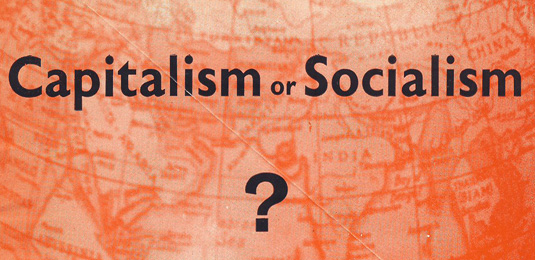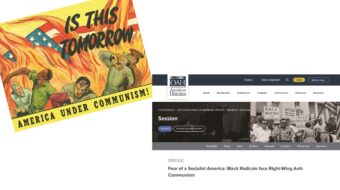
A new art installation by Russian artist Yevgeniy Fiks has opened at Pittsburgh’s Andy Warhol Museum honoring the history of labor and socialist political activity in Western Pennsylvania. This display presents photographs, news clippings, pamphlets, and books detailing the struggle of the working class in one of the 20th century’s most industrialized regions. The New York City-based artist, born in Moscow in 1972, focuses on radical history and the intersection between communism and capitalism.
The Warhol Museum, located on the North Shore of Pittsburgh, prides itself as the global keeper of Andy Warhol’s legacy. The museum opened in 1994 in a historic 1911 building which originally distributed products to mills and mines. The Fiks installation is right at home at this museum. Andy Warhol’s family emigrated from Slovakia to the Pittsburgh suburbs, and his father worked in a local coal mine. Although Warhol went on to achieve artistic fame worldwide, his roots were firmly planted in working-class traditions.
The installation at first appears modest, but reveals a wealth of information. This is a hands-on exhibit. It is located within the Seventh Floor Galleries of the museum, which are dedicated to the early life of Andy Warhol. A single table is situated in the middle of the room surrounded by black and white photography of Warhol’s family and friends. An example of this imagery is a youthful Warhol working at a local department store. Museum attendees and students of the early labor movements may take a seat at the table and delve into the documents. There are books on the history of steelworkers and their unions, file boxes filled with photos of organized strikes, and copies of newsletters from labor-friendly political parties at that time.
Visitors can spend hours researching early labor struggles in Pittsburgh. There are vintage booklets such as a 1934 publication by the American Workers’ Party which proclaims they are moving “toward an American Revolutionary Labor Movement.” Many handmade notices and posters are photocopied announcing local protest rallies against hunger and police brutality. May Day activities were very important in this era and there are announcements of upcoming May Day parades and the proclamation that “Pittsburgh is on the road to becoming a 100% union town.”
The Communist Party is well represented here as it was in the forefront of workers’ rights. It is interesting to note that many social struggles were being dealt with in unison with labor issues at the time. Reproductions of the Tin Mill News, published by the Communist Party unit in the McKeesport Tin Plate Company, call for steelworkers to hear the platform of presidential candidate Earl Browder and his running mate, African-American James W. Ford. The newsletter warns of Republicans aligned with reactionaries on Wall Street and declares that “liberty loving people cannot remain neutral when democracy is attacked.” These statements could very well be made nowadays.
The artist, Yevgeniy Fiks, has designed an installation that helps illuminate how deeply Pittsburgh was involved in the labor movement. There are flyers here that advertise the Workers’ Book Shop on Fifth Avenue in downtown Pittsburgh and its reading and reference room, which was open to the public. Also represented here, through copies of 1930s handmade pamphlets, is the Pittsburgh Workers’ School. An August 1, 1933, notice invites workers of all ethnicities to rally for unemployment insurance at a local park. The Arrow Bulletin of May 1936 advertises a planned demonstration for lower rents and better housing conditions and encourages “All out for May Day.”
The McCarthy era is also dealt with, including books and papers focusing on the House Un-American Activities Committee and their attack on citizens’ rights and freedoms. The collection includes the booklet Treason in Congress: The Record of the Un-American Activities Committee by Albert E. Kahn. The April 1948 intro by former Assistant United States Attorney General O. John Rogge on the opening page is blunt. In his words, “It would be difficult to overestimate the extent to which liberty and democracy in the United States are currently endangered by the operations of the H.C.U.A. activities. Scarcely a day passes without some new abridgment of freedom, some fresh violation of civil rights…resulting from the committee’s activities.”
Yevgeniy Fiks has exhibited his art worldwide from Moscow to New York City, and now Pittsburgh. His published books include Communist Guide to New York City, Lenin For Your Library? and Moscow.The artist appeared October 9th on opening night of the installation to discuss his new exhibit. The research assistant for this project is Hilary Culbertson. Yevgeniy Fiks: Andy Warhol and the Pittsburgh Labor Files runs through January 10, 2016, at the Andy Warhol Museum. For more information on the exhibit, see here.
For more on the Yevegniy Fiks, see here.
Photo: Warhol.org












Comments